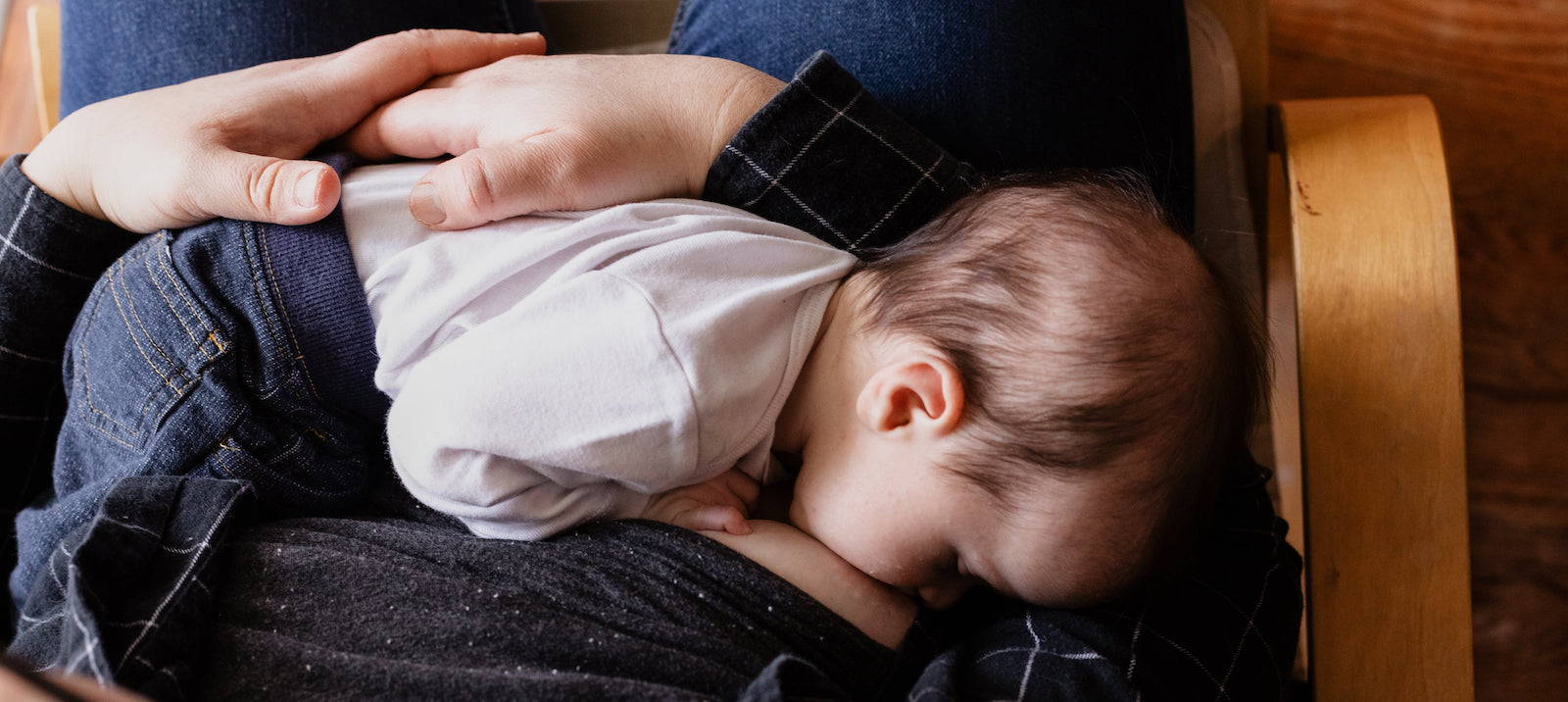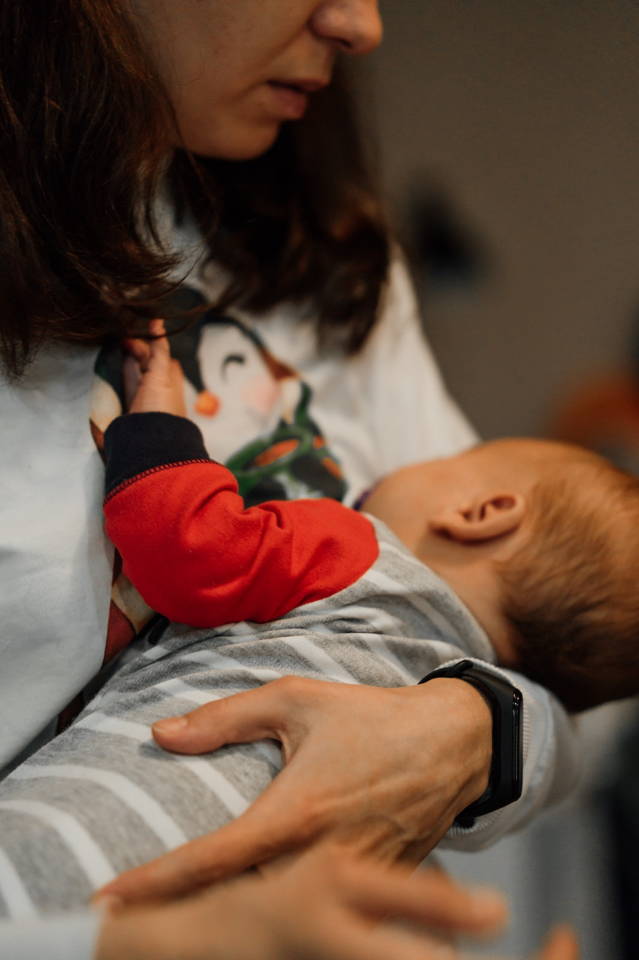EMMA
FEB 3, 2023
Sore Nipples While Breastfeeding:
Causes, Prevention, And Treatment
Breastfeeding is a wonderful way to bond with your baby, but it can also come with its fair share of challenges. One of the most common issues that breastfeeding mothers experience is sore nipples. If you've ever experienced this, you know just how painful and frustrating it can be. But don't worry – you're not alone!
Sore nipples are a common issue that many breastfeeding mothers face, and there are steps you can take to prevent and treat them. In this article, we'll explore the causes of sore nipples, offer tips for prevention, and discuss treatment options. So, let's get started!

1. Causes of Sore Nipples
Sore nipples are a common issue that many breastfeeding mothers experience, but what exactly causes them? Here are some of the most common causes:
A. Incorrect Latch: A Leading Cause of Sore Nipples
One of the leading causes of sore nipples is a poor latch. When your baby is not latched on properly, it can lead to friction and trauma on the nipple, causing pain and discomfort. To ensure a proper latch, make sure your baby's mouth covers a large portion of the areola (the dark area surrounding the nipple) and that their lips are flanged outwards. The baby's chin should be touching the breast, and their nose should be free to breathe.
B. Engorgement: A Painful and Uncomfortable Experience
Engorgement is another common cause of sore nipples. This condition occurs when there is an excess of milk in the breast, making it difficult for the baby to latch on properly. This can cause the nipple to become sore and even cracked. To address engorgement, you can try massaging your breasts before feeding your baby, using warm compresses or taking a warm shower. Expressing a small amount of milk before latching your baby can also help soften the areola and make it easier for them to latch on.
C. Thrush: A Common Fungal Infection
Thrush is a common fungal infection that can affect both mother and baby. It can cause sore nipples, along with other symptoms such as itchiness and white patches in the baby's mouth. To treat thrush, both you and your baby may need antifungal medication. It's important to seek advice from your healthcare provider to determine the best course of action.
D. Nipple Trauma: A Variety of Causes
Nipple trauma can occur from a variety of causes, such as friction from clothing or breast pumps, rough handling during breastfeeding, or even an accidental bite from the baby. To prevent nipple trauma, make sure you wear soft clothing and avoid using harsh soaps or lotions on your nipples. If using a breast pump, ensure that the flange size fits your nipple properly and adjust the suction strength as needed.
It's important to identify the cause of sore nipples so that you can address it properly. If you're experiencing sore nipples, take some time to evaluate your breastfeeding technique and determine if there are any issues with the latch or positioning. Consider seeking help from a lactation consultant or healthcare provider who can provide guidance and support. By identifying and addressing the cause of sore nipples, you can take steps towards pain-free breastfeeding and a positive experience for both you and your baby.

2. Prevention Tips
Prevention is key when it comes to sore nipples while breastfeeding. Here are some tips to help you prevent sore nipples:
A. Warm Compresses
Applying a warm compress to your breast before breastfeeding can help relieve engorgement and make it easier for your baby to latch on. You can use a warm towel or a heating pad on a low setting. This can also help stimulate milk flow and prevent clogged milk ducts.
B. Switch Sides Frequently
Switching sides frequently during feedings can help prevent engorgement and reduce the risk of sore nipples. Make sure to alternate sides every few minutes, and don't hesitate to switch back and forth as needed. This can also ensure that your baby gets enough milk from both breasts.
C. Wear Comfortable Clothing
Wearing loose, comfortable clothing can help prevent friction on the nipple and reduce the risk of soreness. Avoid tight bras or clothing that rubs against the nipple. You can also try wearing a breastfeeding bra that provides support without putting pressure on the nipple.
D. Breastfeeding Pads
Using breastfeeding pads can help protect your clothing from leaks and reduce friction on the nipple. Make sure to change the pads frequently to keep them clean and dry. You can also try using nipple cream to soothe and moisturize the skin.
E. Stay Hydrated
Staying hydrated is important for maintaining a healthy milk supply and preventing engorgement. Make sure to drink plenty of water throughout the day. You can also try drinking warm fluids like herbal tea or broth to help with milk production.

3. Treatment Options
If you're already experiencing sore nipples, don't worry - there are several treatment options that can help relieve your pain and discomfort. Here are some effective treatments for sore nipples:
A. Correct Your Latch for Relief
One of the main reasons for sore nipples is a poor latch during breastfeeding. To correct your latch, ensure your baby's mouth is wide open, and their lips are flanged outwards. The baby's mouth should cover as much of the areola as possible, not just the nipple. Different breastfeeding positions can also help you find a comfortable position that works for you.
B. Try Nipple Creams
Nipple creams can provide soothing relief for sore nipples while protecting them from further damage. Look for a safe cream that is specifically designed for breastfeeding mothers and their babies. Apply the cream generously to your nipples and areolas after each feeding to help reduce pain and promote healing.
C. Use Breast Shells
Breast shells are designed to protect sore nipples from further irritation by creating a barrier between your clothing and your breasts. They also help to promote healing by allowing air to circulate around the nipple. Wearing them for short periods of time, not during feedings, can provide relief and speed up the healing process.
D. Relieve Pain with Hydrogel Pads
Hydrogel pads can provide instant relief for sore nipples by cooling and soothing the skin. They also help to keep the nipple moist, which can aid in the healing process. Make sure to change them frequently to keep them clean and dry.
E. Rinse with Salt Water
Rinsing your nipples with warm salt water can help promote healing and reduce inflammation. Mix a teaspoon of salt with a cup of warm water and use a cotton ball to apply the solution to your nipples. Rinse with clean water afterward and let your nipples air dry.
G. Give it Time
Sometimes, sore nipples just need time to heal. Avoid using harsh soaps or lotions on your breasts, and let your nipples air dry after feedings. It may take a few days to a week for sore nipples to heal completely.
Breastfeeding can be one of the most special and intimate experiences between a mother and her baby. While sore nipples can sometimes make it a difficult journey, it's important to remember that you are not alone. There are many resources available to help you overcome any challenges and enjoy a comfortable and rewarding breastfeeding experience.
Take pride in the fact that you are providing the best possible nutrition and care for your little one. Every time you breastfeed, you're not only nourishing your baby's body, but also strengthening the bond between you and your little one.
FAQs
Can I continue to breastfeed if I have sore nipples?
Yes, in most cases, you can continue to breastfeed if you have sore nipples. However, it's important to identify the cause of the soreness and address it with proper treatment options to prevent further discomfort.
How can I tell if my baby is latching on correctly?
A proper latch should involve the baby taking in a large portion of the areola along with the nipple, with the lips flanged outwards. The baby should be positioned facing the breast with their nose level with the nipple.
Can I pump milk instead of breastfeeding if I have sore nipples?
Yes, pumping milk can be an alternative to breastfeeding if you have sore nipples. However, it's important to make sure you're using the correct breast pump and following proper hygiene and storage procedures. Consult with a healthcare provider or lactation consultant for guidance on pumping.
What is nipple thrush and how is it treated?
Nipple thrush is a fungal infection that can occur in breastfeeding mothers and babies. It can cause soreness, itching, and burning of the nipples. Treatment typically involves an antifungal medication for both the mother and baby, as well as proper hygiene and sanitation practices.
How can I manage engorgement while breastfeeding?
Engorgement occurs when the breasts become overly full with milk. To manage engorgement, try breastfeeding more frequently or pumping to relieve pressure. Applying warm compresses or taking a warm shower before breastfeeding can also help to soften the breast tissue and make it easier for the baby to latch on.

